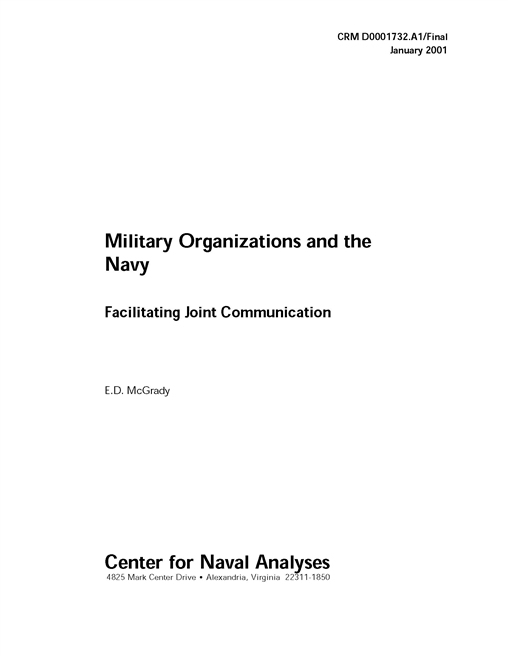The Composite Warfare Commander (CWC) concept provided the framework for command and control of naval forces during the Cold War. The CWC concept divided missions up according to the environ- ment they occur in (air, surface, subsurface, etc.) with authority for defensive and offensive operations delegated to warfare commanders.
CWC was designed to provide a quick reacting and survivable command structure for forces at sea.
Since the end of the Cold War the Navy has been experimenting with variants to the CWC concept. This experimentation is designed to improve the perceived ability of CWC to work with joint and other ser- vices’ command organizations. Taken to the extreme, this drive for compatibility could cause the Navy to mirror other services’ com- mand structures, such as the structure used by the Joint Force Air Component Commander (JFACC), in order to “fit in” with the flow of information in an operation.
By changing the Navy’s command and control structure to fit into the joint world the Navy risks losing the knowledge gained by trying to defend ships against a fast and difficult threat.
There may be a better way. If we assume that battle groups organized their command structure around CWC for a reason, then instead of asking how the Navy can mirror other services, we can ask how the Navy, and other services as well, can adapt their own unique organizational requirements to the communications needs of the joint environment.
The purpose of this paper is to examine other ways in which the Navy could “plug into” service and joint command and control organizations, without the Navy losing the fundamental character of the CWC concept. We do this by looking carefully at the way other services organize for air support of ground combat operations. We look there because it is in the interface between air and ground operations that the most work has been done in adapting joint and service organiza- tions to work with each other.
As we develop alternative ways for CWC to work with joint and inter- service command and control organizations we will need to answer three questions along the way:
- How do the services currently organize for combat operations?
- How do civilian organizations, and civilian organization theory, deal with the problem of interacting with different organiza- tions?
- How can service organizations work together while maintain- ing their own, distinct organizational structures?
Cleared for public release. Distribution unlimited.
Details
- Pages: 74
- Document Number: CRM D0001732.A1/Final
- Publication Date: 1/1/2001
